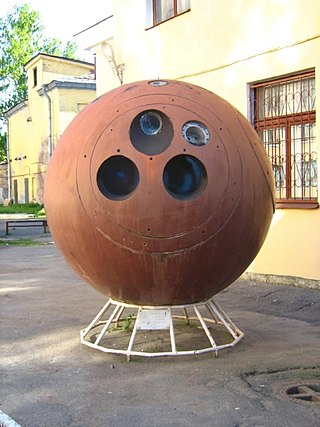Top Qs
Timeline
Chat
Perspective
Kosmos 37
Soviet reconnaissance satellite (Zenit 2-21) From Wikipedia, the free encyclopedia
Remove ads
Kosmos 37 (Russian: Космос 37 meaning Cosmos 37) or Zenit-2 No.21 was a Soviet, first generation, low resolution, optical film-return reconnaissance satellite launched in 1964. A Zenit-2 spacecraft, Kosmos 37 was the twentieth of eighty-one such satellites to be launched[3] and had a mass of 4,730 kilograms (10,430 lb).
Kosmos 37 was launched by a Vostok-2 rocket, serial number R15001-04,[4] flying from Site 31/6 at the Baikonur Cosmodrome. The launch took place at 09:36 GMT on 14 August 1964,[5] and following its successful arrival in orbit the spacecraft received its Kosmos designation, along with the International Designator 1964-044A and the Satellite Catalog Number 00848.
Kosmos 37 was operated in a low Earth orbit, it had a perigee of 207 kilometres (129 mi), an apogee of 287 kilometres (178 mi), inclination of 65.0° and an orbital period of 89.5 minutes.[6] During the mission one of the satellite's film reels snapped, resulting in the associated camera only taking some of the images it had been programmed to produce.[7] The mission has been partially complete because there was a break in the film of the SA-10 camera.[8] On 22 August 1964, after eight days in orbit, Kosmos 37 was deorbited with its return capsule descending by parachute for recovery by Soviet forces.[9]
Remove ads
References
Wikiwand - on
Seamless Wikipedia browsing. On steroids.
Remove ads

